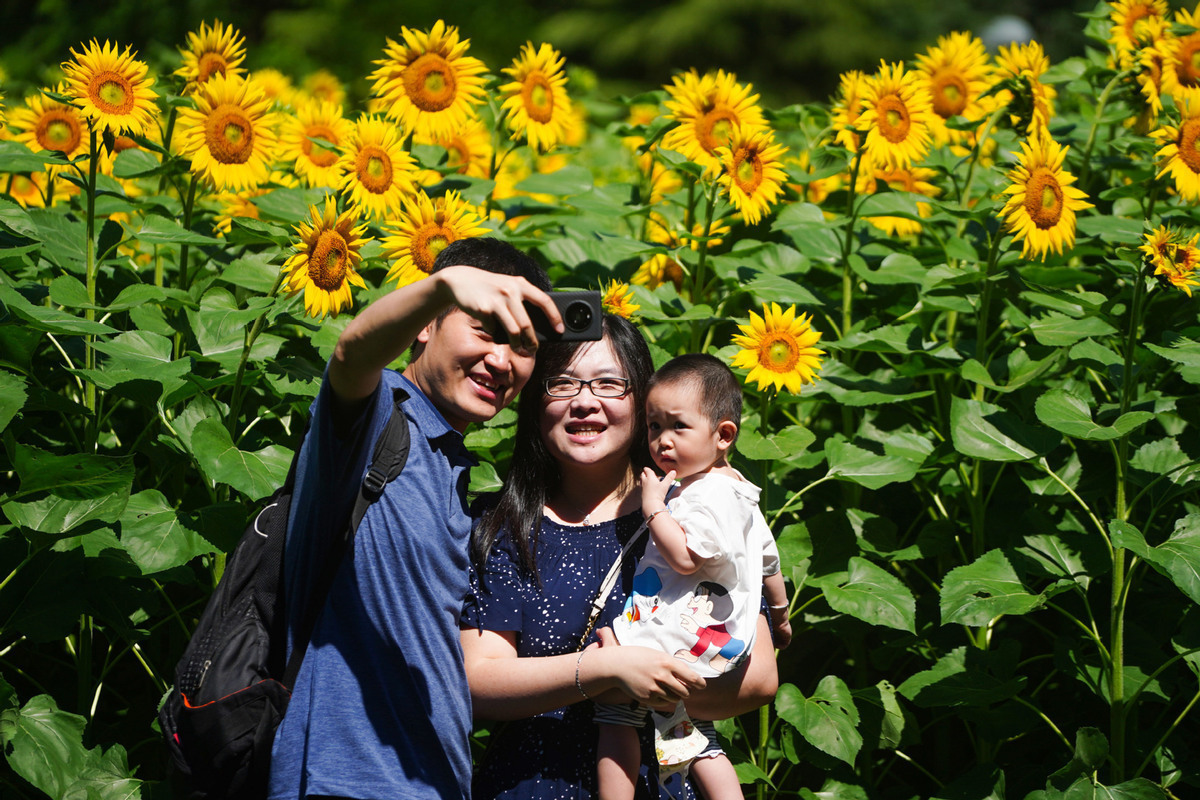Urgent need to encourage births after drop in 2021

A family takes photos against a backdrop of blooming sunflowers at the Olympic Forest Park in Beijing, on July 4, 2021. [Photo/Xinhua]
The Chinese mainland's population will stay above 1.4 billion for years despite a record low birthrate in 2021, but there is still an urgent need for new measures to encourage people to have children, experts said.
The country's birthrate fell to 7.52 births per 1,000 people last year, down from 8.52 in 2020 and the lowest since records began in 1978, according to data released by the National Bureau of Statistics on Monday.

The number of babies born last year was 10.62 million, down from 12 million registered births the previous year.
With the number of deaths topping 10 million for the first time, the mainland's population grew by a modest 480,000 people to over 1.41 billion, the bureau said.
"China's population maintained its stable growth last year," Ning Jizhe, head of the bureau said, at a news briefing.
"The proportion of working age groups-those aged 16 to 59-remained steady at around 880 million," he said.
The declining number of births is driven by multiple factors, including the declining number of women of childbearing age, low willingness among young people to have babies and the impact of the COVID-19 epidemic, he said.
"In 2021, the number of women of childbearing age dropped by about 5 million from the previous year. The group of women between 21 and 35 years of age, deemed the reproductive prime, fell by 3 million year-on-year," he said.
Despite concerns over the falling birthrate, Ning said the country's total population will stay above 1.4 billion for "a certain period".
"The number of new births is expected to be above 10 million annually given the large size of China's overall population," he said, adding that improving health and longer life spans will also help maintain the number.
Ning said he expected to see positive results from the third-child policy and new measures aimed at easing the burden of child care to encourage births.
In May, China announced that all couples will be allowed to have up to three children, replacing the second-child policy that took effect in 2016.
Since then, central and local governments have rolled out policies to facilitate its implementation, ranging from fertility allowances and housing subsidies to extended maternity leave.
Zhai Zhenwu, director of the Population Development Studies Center at Renmin University of China, said the new policies have not been in place long enough to be reflected in the latest population statistics.
"China's low fertility rate is a natural result of modernization and a common challenge confronting many countries, but it should raise alarms," he said.
"Our survey has shown that women in China are willing to have about 1.8 children on average, but the fertility rate in 2020 was only 1.3," he said. "It shows that there is room for improvement via rolling out fertility-friendly policies."
Zhai said promptly enacting the new measures can buy the country more time to adjust to the unstoppable trend of slow or even negative population growth in the future, and upgrade its economic development model to fit an aging society.
Photos
Related Stories
Copyright © 2022 People's Daily Online. All Rights Reserved.










